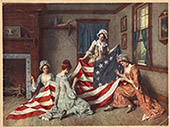Libraries, University of Nebraska-Lincoln
ORCID IDs
Document Type
Archival Material
Date of this Version
8-12-1850
Abstract
DELIVERED, AUGUST 12, 1850, AT THE SMITHSONIAN INSTITUTE, WASHINGTON.
Colton delivered this lecture in support of a proposal by New York merchant Asa Whitney (1797–1872) to build a railway from Lake Michigan to the Pacific. Whitney’s proposal called for Congress to sell him a strip of land sixty miles wide and 2,000 miles long through the public domain—a total of about 78 million acres at a price of 10 cents per acre. Whitney had spent time in Europe and in China, and was convinced that a rail link across North America would become the principal commercial route between Europe and Asia and be the means of bringing the nation’s and the world’s population into closer relations and harmony.
Whitney’s plan was introduced in Congress in 1845 by Senator Zadock Pratt, and was debated for six years before it was finally defeated in 1851. Disagreements over the potential route and over the slave-holding status of the lands to be allotted contributed to its ultimate failure. Nonetheless, Whitney’s aggressive publicity campaign helped popularize the idea and helped prepare the way for Congress’s eventual passage of legislation in 1862 and the completion of the Transcontinental Railroad in 1869.
Colton’s lecture recommends Whitney’s plan on two major accounts: 1) that it would require no borrowing or government expenditure; and 2) that it would become the means for the conversion to Christianity of vast portions of the Asian peoples. He also notes that the western lands to be sold to Whitney were good for nothing else.


